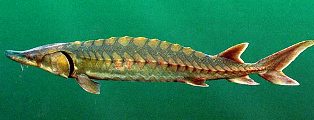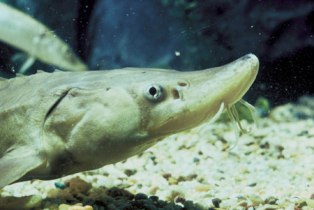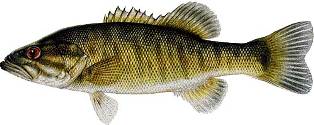Discover Florida Nature
It's time to explore the natural Florida


|
|
|||||||||||||||||||||||||||||||||||||||||||||||||
|
|||||||||||||||||||||||||||||||||||||||||||||||||
Fish have three endangered species, two threatened
species, and ten species of special concern, for a total of 15 fish on
our list. Each Florida fish is classified as either endangered,
threatened or a species of special concern (SSC). The number after the
classification refers to the reason it is classified as a species of
special concern. The description of each number value can be found
here. Click on the common name of the fish for a brief description
and photograph of each endangered fish from the state of Florida. The
state of Florida is often referred to as the fishing capitol of the
world. Florida has 1,350 miles of shoreline and is interlaced with
countless lakes, rivers, ponds streams, and brackish waters. Both
freshwater and saltwater fish can be found within the state of Florida.
Some fish such as the Sturgeon are anadromous species, meaning they live
in the ocean mostly, and breed in fresh water, others are amphidromous,
moving between fresh and salt water during their life cycle, but not to
breed.
 Atlantic
Sturgeon ((Acipenser oxyrinchus) SSC- Sturgeon are among the
oldest living species of fish. They have retained many primitive
characteristics, suggesting what fish may have looked like during the
age of the dinosaurs. Atlantic sturgeon range along the entire east
coast of North America, from the St. John River in New Brunswick,
Canada, to the St. Johns River along the east coast of Florida. A
separate subspecies, the gulf sturgeon, is found along the west coast of
Florida and throughout the Gulf of Mexico. Gulf sturgeon number
initially declined due to overfishing throughout most of the 20th
century. Habitat loss was exacerbated by the construction of water
control structures, such as dams and "sills", mostly after 1950. Other
habitat disturbances such as dredging, groundwater extraction,
irrigation, and flow alterations also threaten the Gulf sturgeon. Atlantic
Sturgeon ((Acipenser oxyrinchus) SSC- Sturgeon are among the
oldest living species of fish. They have retained many primitive
characteristics, suggesting what fish may have looked like during the
age of the dinosaurs. Atlantic sturgeon range along the entire east
coast of North America, from the St. John River in New Brunswick,
Canada, to the St. Johns River along the east coast of Florida. A
separate subspecies, the gulf sturgeon, is found along the west coast of
Florida and throughout the Gulf of Mexico. Gulf sturgeon number
initially declined due to overfishing throughout most of the 20th
century. Habitat loss was exacerbated by the construction of water
control structures, such as dams and "sills", mostly after 1950. Other
habitat disturbances such as dredging, groundwater extraction,
irrigation, and flow alterations also threaten the Gulf sturgeon.  Shortnose
Sturgeon (Acipenser brevirostrum)E- The shortnose sturgeon
shares the same general external morphology of all sturgeon. The
shortnose sturgeon is the smallest of the three sturgeon species that
occur in eastern North America, having a maximum known total length of
4.7 feet and weight of 50.7 pounds. Growth rate and maximum size vary
with latitude, with the fastest growth occurring among southern
populations. Maximum known age is 67 years for females, but males seldom
exceed 30 years of age. n the 1950s, sturgeon fisheries declined on the
east coast which resulted in a lack of records of shortnose sturgeon.
This led the Fish and Wildlife Service (FWS) to conclude that the fish
had been eliminated from the rivers in its historic range (except the
Hudson River) and was in danger of extinction. FWS believed the
population level of the shortnose sturgeon had declined because of
pollution and overfishing, both directly and incidentally in shad
gillnets. Shortnose
Sturgeon (Acipenser brevirostrum)E- The shortnose sturgeon
shares the same general external morphology of all sturgeon. The
shortnose sturgeon is the smallest of the three sturgeon species that
occur in eastern North America, having a maximum known total length of
4.7 feet and weight of 50.7 pounds. Growth rate and maximum size vary
with latitude, with the fastest growth occurring among southern
populations. Maximum known age is 67 years for females, but males seldom
exceed 30 years of age. n the 1950s, sturgeon fisheries declined on the
east coast which resulted in a lack of records of shortnose sturgeon.
This led the Fish and Wildlife Service (FWS) to conclude that the fish
had been eliminated from the rivers in its historic range (except the
Hudson River) and was in danger of extinction. FWS believed the
population level of the shortnose sturgeon had declined because of
pollution and overfishing, both directly and incidentally in shad
gillnets. Shoal
Bass (Micropterus cataractae ) SSC - Until
October 1999, this species was variously considered to be a redeye bass
or subspecies of the redeye bass. The shoal bass is common in the
Apalachicola and Chipola River where shoals exists. It is also known in
the Chattahoochee and Flint river drainages. Shoal bass are closely
associated with rock shoals and are uncommon in other habitats. Shoal
bass feed mainly on aquatic insects on the surface. They also feed on
larval insects, crayfish and fish. Shoal bass grow much faster than
redeye bass. Shoal
Bass (Micropterus cataractae ) SSC - Until
October 1999, this species was variously considered to be a redeye bass
or subspecies of the redeye bass. The shoal bass is common in the
Apalachicola and Chipola River where shoals exists. It is also known in
the Chattahoochee and Flint river drainages. Shoal bass are closely
associated with rock shoals and are uncommon in other habitats. Shoal
bass feed mainly on aquatic insects on the surface. They also feed on
larval insects, crayfish and fish. Shoal bass grow much faster than
redeye bass.
|
|||||||||||||||||||||||||||||||||||||||||||||||||
|
Advertise | Privacy Statement | Dog Encyclopedia | Video |Contact | Alaska Nature |
|||||||||||||||||||||||||||||||||||||||||||||||||